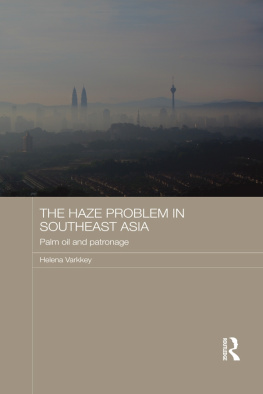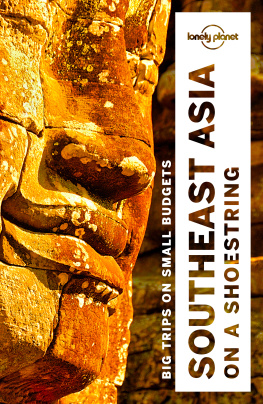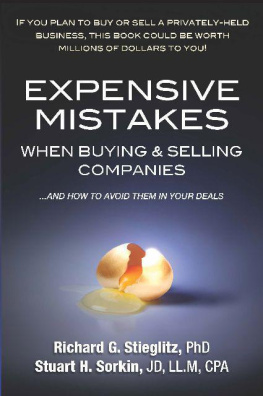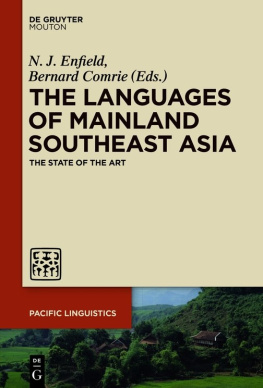Eric Moraczewski - Succeeding at Business in Southeast Asia: Common Mistakes Companies Make
Here you can read online Eric Moraczewski - Succeeding at Business in Southeast Asia: Common Mistakes Companies Make full text of the book (entire story) in english for free. Download pdf and epub, get meaning, cover and reviews about this ebook. year: 2020, publisher: Wiley, genre: Business. Description of the work, (preface) as well as reviews are available. Best literature library LitArk.com created for fans of good reading and offers a wide selection of genres:
Romance novel
Science fiction
Adventure
Detective
Science
History
Home and family
Prose
Art
Politics
Computer
Non-fiction
Religion
Business
Children
Humor
Choose a favorite category and find really read worthwhile books. Enjoy immersion in the world of imagination, feel the emotions of the characters or learn something new for yourself, make an fascinating discovery.

- Book:Succeeding at Business in Southeast Asia: Common Mistakes Companies Make
- Author:
- Publisher:Wiley
- Genre:
- Year:2020
- Rating:5 / 5
- Favourites:Add to favourites
- Your mark:
- 100
- 1
- 2
- 3
- 4
- 5
Succeeding at Business in Southeast Asia: Common Mistakes Companies Make: summary, description and annotation
We offer to read an annotation, description, summary or preface (depends on what the author of the book "Succeeding at Business in Southeast Asia: Common Mistakes Companies Make" wrote himself). If you haven't found the necessary information about the book — write in the comments, we will try to find it.
Eric Moraczewski: author's other books
Who wrote Succeeding at Business in Southeast Asia: Common Mistakes Companies Make? Find out the surname, the name of the author of the book and a list of all author's works by series.
Succeeding at Business in Southeast Asia: Common Mistakes Companies Make — read online for free the complete book (whole text) full work
Below is the text of the book, divided by pages. System saving the place of the last page read, allows you to conveniently read the book "Succeeding at Business in Southeast Asia: Common Mistakes Companies Make" online for free, without having to search again every time where you left off. Put a bookmark, and you can go to the page where you finished reading at any time.
Font size:
Interval:
Bookmark:
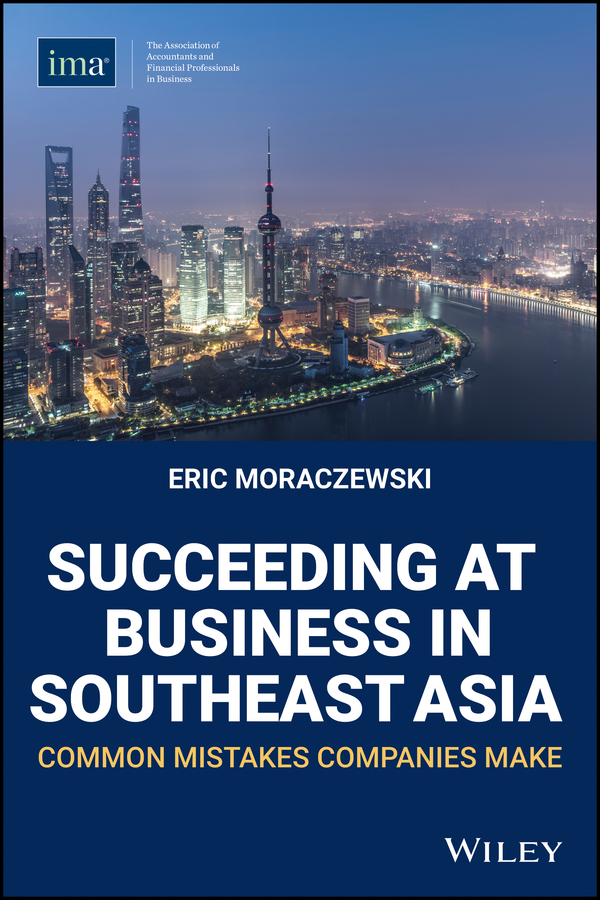
Eric Moraczewski

Succeeding at Business in Southeast Asia
Common Mistakes Companies Make and How To Avoid Them
Copyright 2016
Published by the Institute of Management Accounts (IMA)
All rights reserved. No part of this book may be used or reproduced by any means, graphic, electronic, or mechanical, including photocopying, recording, taping, or by any information storage retrieval system without the written permission of the publisher except in the case of brief quotations embodied in critical articles and reviews. For permission requests, write to the publisher, addressed Attention: Research Coordinator, at the address below:
Institute of Management Accountants
10 Paragon Drive, Suite 1
Montvale, NJ 07645
www.imanet.org
Because of the dynamic nature of the Internet, any Web addresses or links contained in this book may have changed since publication and may no longer be valid. The views expressed in this work are solely those of the author and do not necessarily reflect the views of the publisher, and the publisher hereby disclaims any responsibility for them.
ISBN Print: 978-0-996-72936-9
ISBN ePDF: 978-1-119-73706-3
ISBN ePUB: 978-1-119-73705-6
First Edition
A special thanks to my wife, Kathryn, who sticks with me and supports me no matter how busy I get, and to my children, James and Nora, whom Kathryn and I are so very fortunate to have in our lives. Thank you also to my parents, sister, and my in-laws who help us so much as we take on work, school, and everything else that comes up in our lives.
Over the course of the last 10 years I have been involved in doing business on four continents, in 20+ countries, and more cities than I can count. My experience has led me to appreciate a lot, understand some, and teach a little bit. I have presented at conferences and seminars, primarily on Asia, and specifically on China, regarding private equity, how Chinese capital is affecting business in the United States, business opportunities in Asia, and human resource practices in Asia. Currently, I run a cross-border growth strategy company called FDI Strategies where we build market entry strategy, put together a plan, and help a company execute these strategies. Truly, it is a lot of fun working with companies from assorted industries, with varying needs and distinctly different opportunities. No two days are alike and every day is exciting. More than anything, I am blessed to work with special people every day of my life, from our board of directors to our interns. This enthusiastic, exceptional team makes me look better than I am and ensures that every day is rewarding.
My background is in finance and accounting; needless to say, I like numbers. When I think about some of our clients who focus solely on the United States, I am mindful of the fact that the United States makes up five percent of the world economy (based upon population). This is a large number for one country, no doubt, but it also shows that theres immense potential outside of the U.S market. If only there was an extremely large population somewhere in the world with a growing middle class who was beginning to consume more and more. Oh wait, there isSoutheast Asia! Today, Asia makes up roughly 60 percent of the world economy based on population. The Southeast Asian markets have seen immense growth over the last 20 years and continue to evolve every day; perhaps most compelling is the speed at which this demographic is increasing. No longer does it take 50 years for a middle class to evolve. In the last 10 years, while traveling back and forth from China, I have witnessed dramatic change.
My goal in this book is to walk you through the steps necessary to build and execute a market entry strategy into Southeast Asia, similar to what we do with our clients at FDI Strategies. You will learn about the top five pitfalls as well as common areas of concern and mistakes, in a step-by-step manner. These can be internal or external issues, they can be country-specific or endemic to the region, but they all are issues we have regularly seen with clients and other businesses. I have tried, where possible, to use examplesconcrete illustrationsbased on my own career experience to help reveal the bigger picture and affirm that you are not the only one who makes mistakes. As Ive learned from hard experience, mistakes are also great opportunities for personal growth and knowledge.
My primary focus is on showing you how to develop a strategy, use that strategy to build a plan, and use that plan to execute and succeed in the market. After all, we all want to succeed. Putting our best foot forward is the first step toward finding success.
I will also examine topics that may apply to some, but not all, companiesjoint ventures, franchising strategy, and how small businesses might go about developing their own Asian market entry strategy. In addition, I will also touch on the relationships that most people already have and do not know they have, and how to utilize those relationships. Finally, I will explore the takeaways from your Asian strategy and operations. This is important because, while it is great to grow your business in a foreign country, there are many lessons you can learn from foreign operations and apply to your home market. If you do not do this, you are not maximizing the value that can be derived from your international expansion.
Developing a strategy involves examining several things. To begin with, we look at a firms history to understand why a company is where it is currently and to gain an understanding of what brought it to that point, which provides an overall understanding of the firm. From there, we look at the external environment, the factors that exert a force on the firm and then the forces the firm exerts on the external environment. Many times we forget about how much the external environment propels a company in a certain direction, but laws change and companies shift. Consider the Affordable Care Act in the United States: it would be hard to find a company that this legislation did not affect. Finally, we look at the present environment, what is going on within the firm and what effect these internal dynamics may have on the business as a whole.
This process tells us where a firm is today, how it got there, and what forces are playing on it. We use the same process if we are looking at expansion into foreign countries or looking to help a company build an overall strategy within its current markets. If you do not understand where your company is and where it has come from, how can you ever expect to know where it is headed?
FDIs director of strategy spent many years in the Air Force as a chief strategist and taught strategy to the Air Force leadership. He likens much of strategy to a ship in the ocean: think Christopher Columbus sailing to the New World and the currents that pushed him toward his destination (and out of Spain). These currents are his history and his present, but they also affect where he will go in the future.
Once youve assessed where you came from, you must figure out where you are going. When referring specifically to Southeast Asia, you need to look at who you are as a company and how you can map your strengths to what you are looking to do in those markets. So, if you are selling a new technology that needs a very established infrastructure, you should probably look at the opportunities of Japan, perhaps Singapore, or even Korea; you should probably not look to Malaysia, Myanmar, or Indonesia. Using what you know about your company and your abilities, as well as your interests in the markets, you can select a country, or, perhaps, if you have the resources, several countries.
Next pageFont size:
Interval:
Bookmark:
Similar books «Succeeding at Business in Southeast Asia: Common Mistakes Companies Make»
Look at similar books to Succeeding at Business in Southeast Asia: Common Mistakes Companies Make. We have selected literature similar in name and meaning in the hope of providing readers with more options to find new, interesting, not yet read works.
Discussion, reviews of the book Succeeding at Business in Southeast Asia: Common Mistakes Companies Make and just readers' own opinions. Leave your comments, write what you think about the work, its meaning or the main characters. Specify what exactly you liked and what you didn't like, and why you think so.


